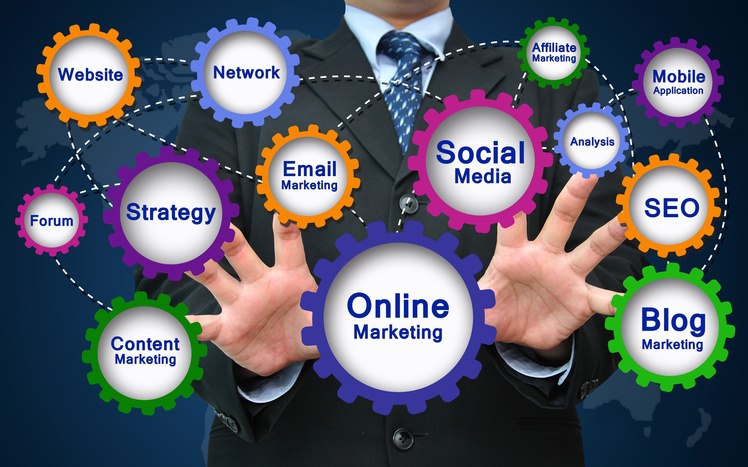5 Best Practices When Gathering Business Requirements for Marketing Production
content management | digital asset management | content marketing | Collaboration with team members | business gathering requirements process
There’s little doubt that technology has a role to play in streamlining and enhancing marketing production. However, from the decision to implement one of these systems, five critical issues require attention.
You have to analyze everything from choosing which solution is right for your business needs, to ensuring its successful deployment, adoption, and usage. Understanding marketing production for stakeholders and gathering the business requirements for such a solution can be a challenging (and sometimes a thankless) task that can dictate the success or failure of a project.
The solutions available, like digital asset management, content marketing, and collaboration, are vastly different, and as a result, fulfill a host of varied requirements. Moreover, what remains the same are these five critical issues that organizations need to master during the requirement gathering process.
Change Management For Your Marketing Production System
Once the decision has been made to adopt a new technology or even upgrade to a better solution, a period of change is signaled for the business. Let's face it. We are not always comfortable with change. This is why change management and communication to all stakeholders need to begin here and continue throughout the process. How to collaborate with my marketing team is also of great value.
Looking at the business requirements gathering process, we've outlined what you should be looking for to make the process more efficient.
1. Prioritize
One of the most common mistakes in the endeavor to adopt marketing production technology is not prioritizing the requirements. Typically some individuals, teams, and departments participate in this step, each viewing their own needs as urgent or most important.
Additionally, each of the stakeholders will use the technology differently, with varying levels of use and engagement. As a result, the prioritization of requirements based on these aspects is paramount. Especially important as the chosen solution can never meet all requirements of all stakeholders — not everyone is going to get what they want, and this too needs to be managed.
Invariably, this work completed by a neutral third-party facilitator is necessary, which leads to the next area.
2. Objective
All stakeholders involved in the process will invariably approach the project from a different perspective — which is fair enough; creatives have different requirements than account management, for example.
However, when it comes to managing the requirement gathering process, the danger is that if it is done internally, there will be some level of bias. Finance, for example, will push for cost-effectiveness and ROI, while the production team will prioritize workflow improvements.
An unbiased facilitator, such as a system integrator, can engage will all parties involved and all opinions will be up for consideration. They will also provide the much-needed insight, as well as an impartial point of view that will help keep the project on track and ultimately yield a solution that is fit for purpose.
3. Understand
Once all the stakeholders have given their feedback and requirements for the new system, the facilitator needs to take the time to bring all parties together in the same room and go through the prioritized requirements.
The reason? Expectation management.
If users, who’ve participated in workshops and have given their conditions, realize their needs are not being met, there could be a lot of dissatisfaction or apathy regarding the project, which will ultimately spill over into the actual adoption and usage of the chosen solution. The facilitator can explain to all parties why specific requirements considered a priority.
Moreover, why certain things are more important for various stakeholders. Again, communication is essential as all stakeholders are engaged in the process, and as it’s managed by a neutral third-party, individuals are more likely to be on their best behavior and participate in the process. All this leads to more significant levels of understanding and positivity.
4. Influence
Stakeholders in the process need to know what the priorities and why, in addition to how this new technology or solution will impact the company, their job roles and broader delivery of projects. For example, if the answer requires a lot of work by individual staff, in the beginning, they need to understand that, as well as what the financial pay-off will be in the end.
There is bound to be some resistance to change (as well as keen early adopters) but keeping communication flowing can mitigate any issues that may arise.
As mentioned, it should begin from day one. In this way, employees feel like they’ve been part of the whole process, listened to and involved, which will help build loyalty and ensure everyone gets the most out of the new technology.
5. Test
When stakeholders gather their requirements, they no longer concern themselves with what users are doing today. They look at the long-term functionality of a specific technology or solution. And that’s how it should be.
However, one of the more common mistakes is to ignore the long-term outlook during the testing phase. Essentially, testing provides the stakeholders with the opportunity to understand the functionality and capabilities of the new system, while also thinking about what it could potentially do in the future.
This step enables people to see the different opportunities technology can bring to their roles and departments. This area also helps the company and solutions provider keep the project in check.
Key Takeaway
The requirements gathering phase of any project does ultimately reflect the success of that plan. By keeping communication open, engagement high, and expectations managed, you can achieve better buy-in from staff and minimize adverse reactions. Key to all of this is employing a neutral facilitator to take a point in the requirement gathering process and guide your business through to deployment and adoption.
To learn more about improving your digital asset management and increasing the efficiency of your processes, read our free guide: Future-Proofing Your Digital Asset Management and Creative Production.
About Tammy Michalek
Tammy has a diverse experience in creating strong collaboration with clients and product teams, user centric design, product strategy and lean development practices to develop innovation strategies for clients. Tammy's focus is on improving process, communication and efficiencies so that product teams and clients can successfully push boundaries and deliver smart products to market. Executes ideas into reality. Superior communication/presentation skills. Highly analytical and results focused. Specialties: Developing innovation strategies for clients using technology and design to create new products, experiences, infrastructure and services. Marketing operating systems and processes. And talking to strangers for just about any reason.








 ioi blog
ioi blog ioi events
ioi events ioi newsletter
ioi newsletter